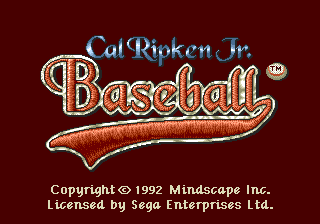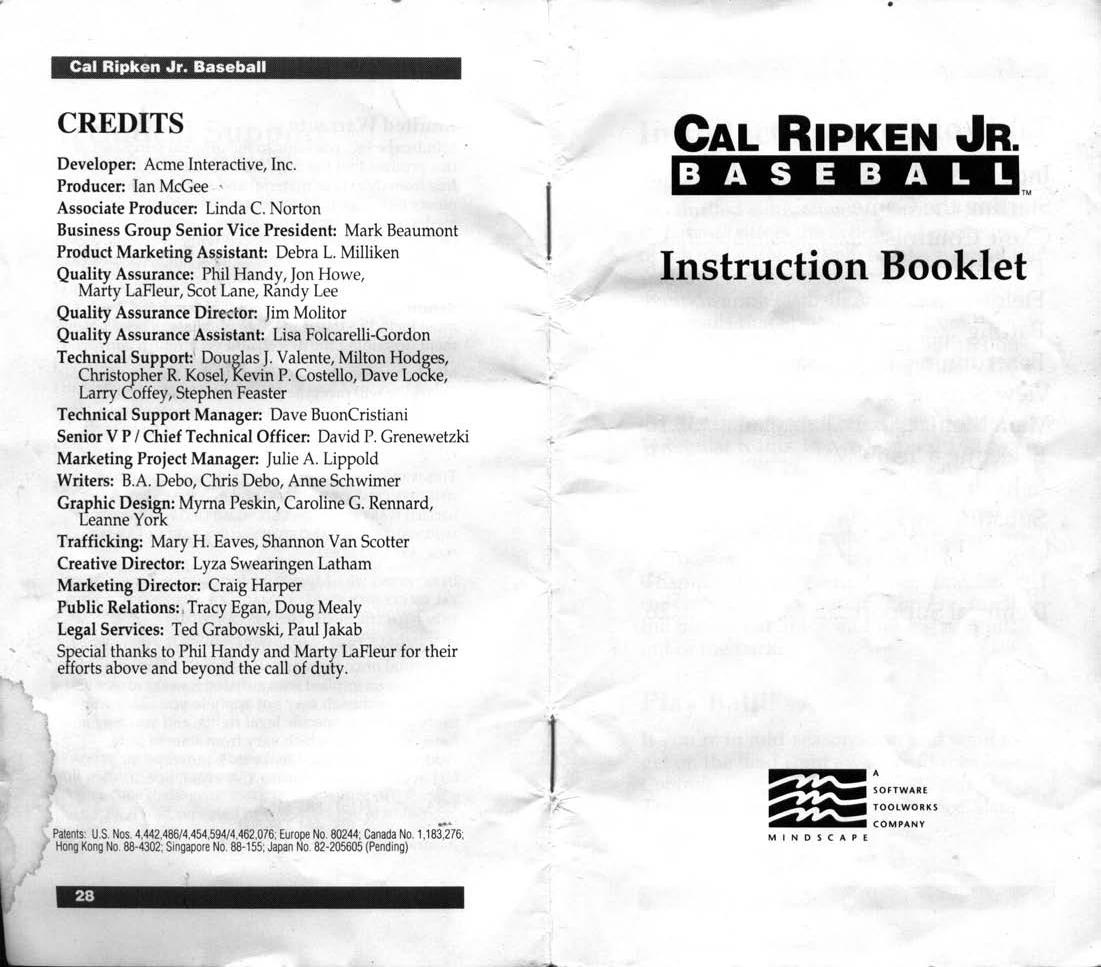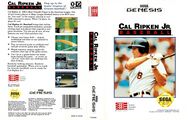Cal Ripken Jr. Baseball
From Sega Retro
| Cal Ripken Jr. Baseball | |||||||||||||||
|---|---|---|---|---|---|---|---|---|---|---|---|---|---|---|---|
| System(s): Sega Mega Drive | |||||||||||||||
| Publisher: Mindscape | |||||||||||||||
| Developer: Acme Interactive | |||||||||||||||
| Sound driver: GEMS | |||||||||||||||
| Genre: Sports (baseball) | |||||||||||||||
| Number of players: 1-2 | |||||||||||||||
| |||||||||||||||
|
This teeny-tiny article needs some work. You can help us by expanding it.
Cal Ripken Jr. Baseball is a 1992 baseball game for the Sega Mega Drive and SNES by Mindscape, endorsed by professional baseball player Cal Ripken Jr. The Mega Drive version was only released in the US.
The game was first announced as Mindscape Baseball, changing its name when Cal Ripken Jr. came on board to endorse it.
Contents
Gameplay
![]() bats, pitches, and tosses the ball to other players, and the D-pad moves. You have control of your teammates if your opponent has hit the ball.
bats, pitches, and tosses the ball to other players, and the D-pad moves. You have control of your teammates if your opponent has hit the ball.
Teams
- San Francisco
- Atlanta
- Los Angeles
- Cincinnati
- Chicago
- New York
- Pittsburgh
- St Louis
- Chicago
- Oakland
- Minnesota
- Texas
- New York
- Baltimore
- Boston
- Detroit
- All Stars
- MVPs
Production credits
- Developer: Acme Interactive, Inc.
- Producer: Ian McGee
- Associate Producer: Linda C. Norton
- Business Group Senior Vice President: Mark Beaumont
- Product Marketing Assistant: Debra L. Milliken
- Quality Assurance: Phil Handy, Jon Howe, Marty LaFleur, Scot Lane, Randy Lee
- Quality Assurance Director: Jim Molitor
- Quality Assurance Assistant: Lisa Folcarelli-Gordon
- Technical Support: Douglas J. Valente, Milton Hodges, Christopher R. Kosel, Kevin P. Costello, Dave Locke, Larry Coffey, Stephen Feaster
- Technical Support Manager: Dave BuonCristiani
- Senior V P / Chief Technical Officer: David P. Grenewetzki
- Marketing Project Manager: Julie A. Lippold
- Writers: B.A. Debo, Chris Debo, Anne Schwimer
- Graphic Design: Myrna Peskin, Caroline G. Rennard, Leanne York
- Trafficking: Mary H. Eaves, Shannon Van Scotter
- Creative Director: Lyza Swearingen Latham
- Marketing Director: Craig Harper
- Public Relations: Tracy Egan, Doug Mealy
- Legal Services: Ted Grabowski, Paul Jakab
- Special thanks to Phil Handy and Marty LaFleur for their efforts above and beyond the call of duty.
Magazine articles
- Main article: Cal Ripken Jr. Baseball/Magazine articles.
Promotional material
Print advert in Sega Visions (US) #11: "February/March 1993" (199x-xx-xx)
Physical scans
| Sega Retro Average | |||||||||||||||||||||||||||||||||||||||
|---|---|---|---|---|---|---|---|---|---|---|---|---|---|---|---|---|---|---|---|---|---|---|---|---|---|---|---|---|---|---|---|---|---|---|---|---|---|---|---|
|
| 65 | |
|---|---|
| Based on 7 reviews | |
Technical information
- Main article: Cal Ripken Jr. Baseball/Technical information.
References
- ↑ File:Cal Ripken Jr Baseball MD US Manual.pdf, page 1
- ↑ 1700 igr dlya Sega, "" (RU; 2001-xx-xx), page 65
- ↑ Computer & Video Games, "May 1993" (UK; 1993-04-15), page 97
- ↑ Electronic Games (1992-1995), "January 1993" (US; 1992-12-10), page 63
- ↑ Sega Mega Drive Advanced Gaming, "April 1993" (UK; 1993-xx-xx), page 30
- ↑ Sega Pro, "May 1993" (UK; 1993-04-08), page 59
- ↑ Sega Force, "March 1993" (UK; 1993-02-04), page 64
- ↑ Tricks 16 bit, "Tricks Sega Gold 800 igr" (RU; 1998-03-20), page 49
| Cal Ripken Jr. Baseball | |
|---|---|
|
Main page | Comparisons | Hidden content | Magazine articles | Reception | Region coding | Technical information | |





